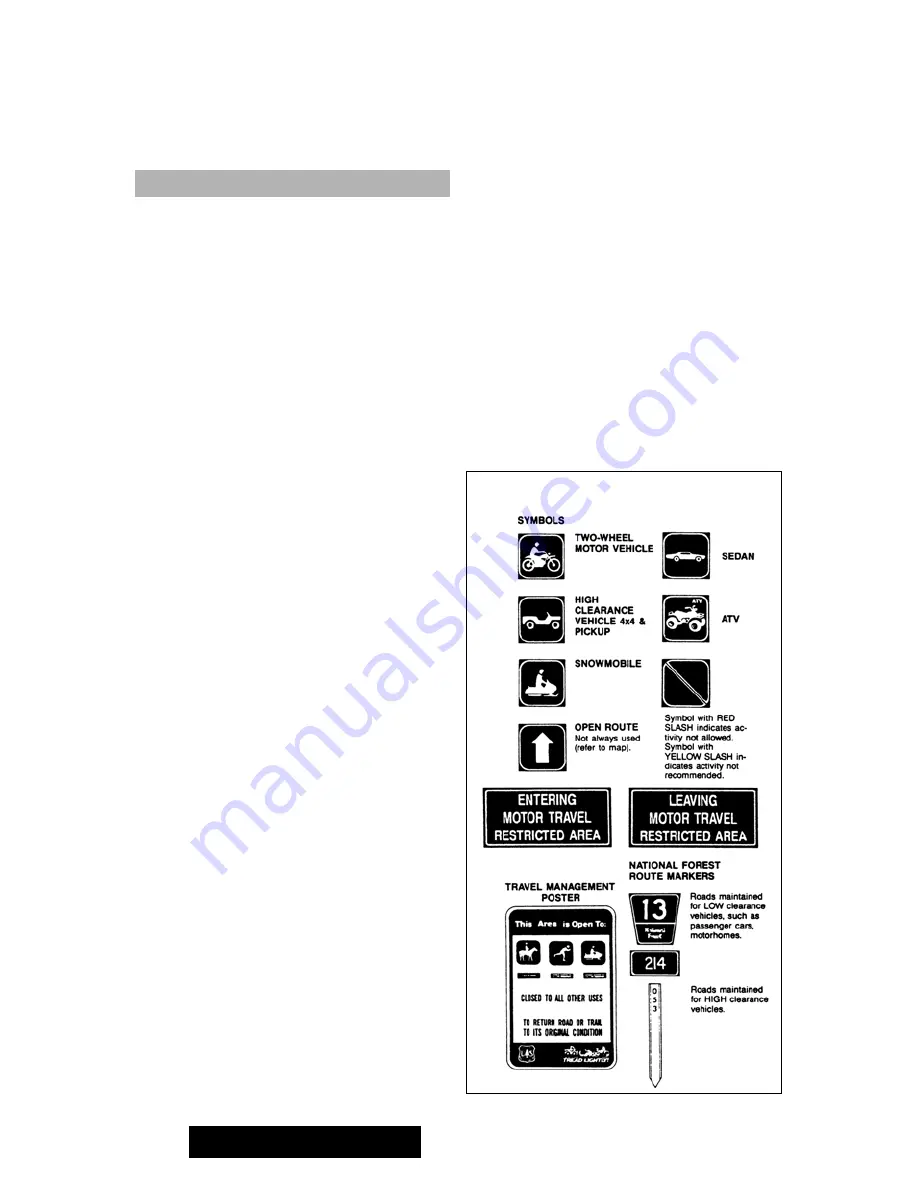
! WARNING
Indicates a hazardous situation which, if not
avoided, could result in death or serious injury.
22
Sound Judgment
Overview
You are not invincible. Knowing that the
first “S” in “P.A.S.S.” stands for “Sound
Judgment” means you need to use yours.
The environment you operate an ATV in
is often harsh and sometimes dangerous
if you don’t take proper precautions.
Weather
You need to consider the weather. It is
dangerous to ride your ATV when the
weather is bad or potentially bad. Keep
abreast with weather forecasts.
Terrain
Always pay close attention to the terrain
you’re on, even if it is familiar to you.
You can’t assume that the landscape
you’re used to doesn’t change. Changes
to landscape can happen at nearly any
time. Fences can be constructed and
excavations dug in a short period of time.
Weather, climate, and development take
their toll.
The thing about terrain is that sometimes
you don’t know it’s changed until you get
there. Whether it’s familiar or not, check
out your surroundings before and during
your ride.
Night Riding
Riding at night can be very hazardous.
Obstacles and other hazards (that are eas-
ily identified during daytime) are much
more difficult to see and avoid. When
night riding, make sure the lights are
properly adjusted and in good working
order. Reduce speed; do not over-drive
the headlights. Never travel in an unfa-
miliar area or blaze a new trail at night.
Always carry a flashlight or flare for sig-
naling an emergency.
Paved Surfaces
Avoid whenever possible. The ATV isn’t
designed for pavement. Its handling
becomes more difficult on paved sur-
faces. If operating on paved surfaces is
unavoidable, travel slowly (less than 10
MPH) and avoid sudden turns and stops.
Trail Riding
Use sound judgment when trail riding;
that means riding on a trail that fits your
ability level. If the trail is pretty rugged,
standing up on your footrests will make it
easier for you to endure the rough terrain.
Make yourself visible by using head-
lights and taillights, and pull completely
off the trail if you need to stop.
Outsloped trails (trails that slant to allow
rain to run off) make trail riding a bit
more challenging. Keep your weight
shifted into the slope.
It also helps to know which trails you can
legally ride and who else might be on
those same trails. These are signs cur-
rently used in some areas to designate
trail types and restrictions.
ATV-0068
Environment
Trail Signs
Summary of Contents for ALTERRA 400
Page 75: ...73 Maintenance Record DATE MILEAGE SERVICE PERFORMED NOTES...
Page 76: ...74 Maintenance Record DATE MILEAGE SERVICE PERFORMED NOTES...
Page 77: ...75 NOTES...
Page 78: ...76 NOTES...
















































